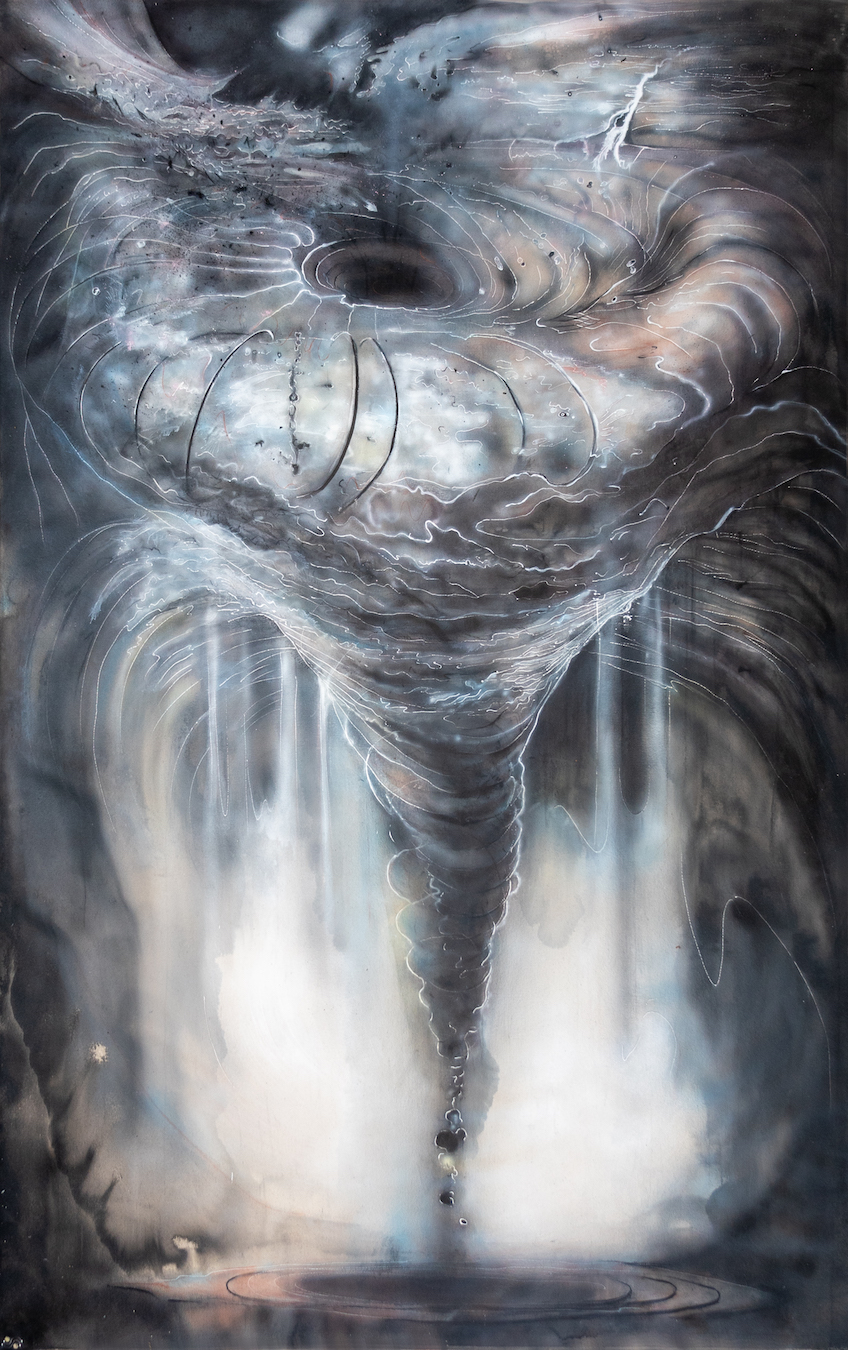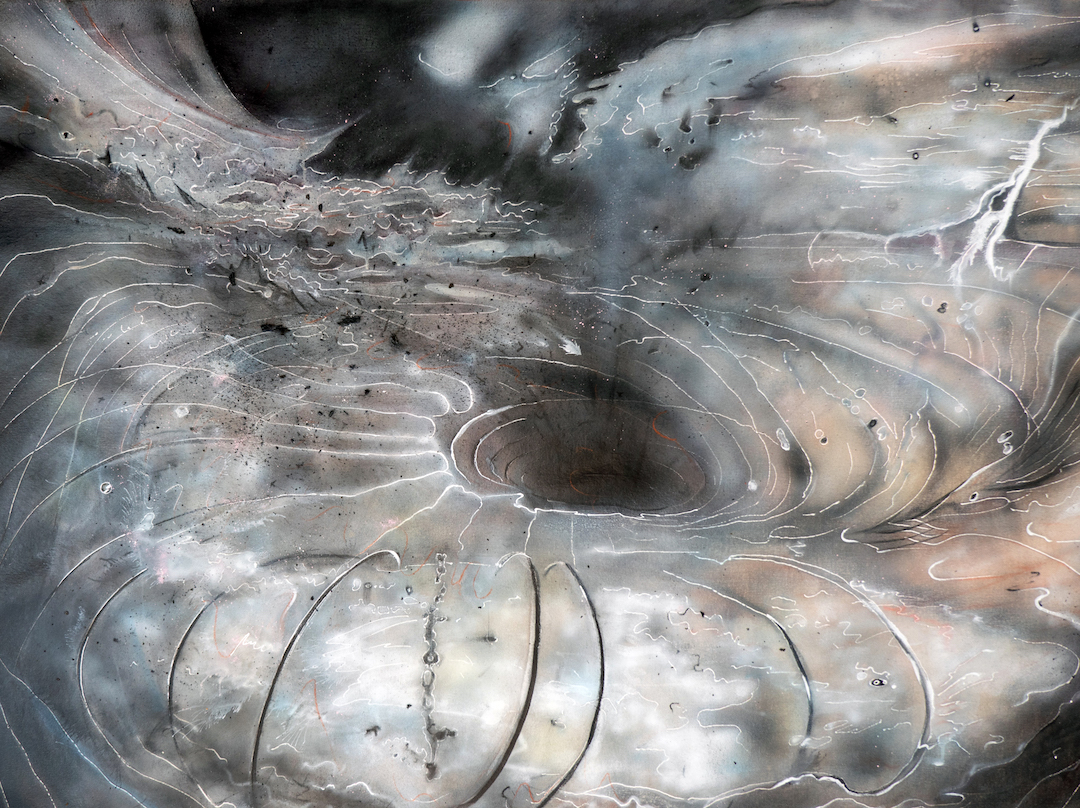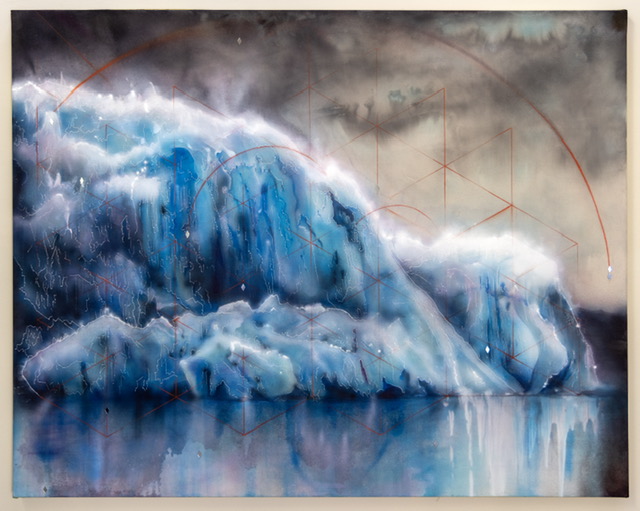From River to Ocean:
Artists Respond to Environmental Impacts

Yulia Pinkusevich
Website - https://yuliapink.com/
Instagram - https://www.instagram.com/yuliapink/
Yulia Pinkusevich is an artist and educator born in Kharkiv, Ukraine (USSR). Upon the collapse of the Soviet Union, her family fled the eastern block as refugees, immigrating to New York City. She later relocated to California first to attend college and later graduate school, continuing to reside in the Bay Area to this day. She holds a Masters of Fine Arts from Stanford University and Bachelors of Fine Arts from Rutgers University, Mason Gross School of the Arts. Yulia has exhibited nationally and internationally including solo projects and exhibitions in Paris, France, Buenos Aires, Argentina, London, UK and upcoming solo show in Geneva, Switzerland in 2025.
Yulia’s art is in the public collection of the deYoung Museum, Stanford University, Facebook HQ, Google HQ and the City of Albuquerque amongst others. She has been awarded a 2024 Smithsonian Artist Research Fellowship at the National Air and Space Museum, other fellowships include Gray Area Arts Foundation, Wildlands, Lucid Arts Foundation, Autodesk Pier 9, Recology (San Francisco Dump), Cite des Arts International (Paris), Headlands Center for the Arts, Vashon AIR and many others. Yulia has lectured at Stanford University and is currently an Associate Professor of Studio Art holding joint appointments at the College of Art Media and Design and Mills College, at Northeastern University in Oakland California. She lives and creates works on unceded Ohlone territory.
Yulia works primarily in drawing, painting and installation. She creates projects and large-scale environments that consider our ecological and social systems. Her work observes land and environment critically, focusing on the psychology of space while exploring visible and psychological environments sentient beings inhabit. Using art as a vehicle to merge the physical and psychological parallels, she explores the sentiments of our non-human kin and the life force of elemental beings like water and fire. Her work is a search for innate inner truths.
Her background itself is rooted in change. Born and raised in the USSR at a time of great political upheaval and uncertainty, her work stems from her identity as an immigrant of Siberian & Ukrainian roots. Her art explores dualities and the complex relationships between her blended identity and home countries. Formally, the work is engaged with the direct experience of the viewer through perspectival illusion and spatial perception that play with the subconscious and cognitive understanding of space. By breaking logical perspectives, she creates illusions of impossible spaces, non-places or utopias that shift the viewpoint to the panoptic.
Accelerated Systems: Jökulsárlón Glacier in Iceland is one of the last remaining frozen realms on our Earth, these colossal ice formations command the seas and float away from the glacier, accelerating the melting time as they break off. A mesmerizing and rare spectacle unfolds, a shelf or iceberg calved from its glacier. After dramatically splitting away from the parent shelf, the big icy chunk tips and rolls as gravity pulls most of its weight underwater, this calving iceberg is tousled, shaped and carved by the elements, and through this process flips to reveals its ancient underbelly of stunningly deep blue tones of ancient sculpted forms. Its massive size cannot be understated, as it transforms and melts back into its liquid form one can observe small air bubbles of ancient air, from millennia past, trapped in this diminishing sculptural body, flattened bubbles inside this pristine ancient ice. This happens when air pockets between snowflakes are trapped in pores between ice crystals as the ice makes its way from the upper layer of a glacier to deep inside it. Scientists say that ice bubbles' peculiar shapes reveal how fast the water froze and how much gas was dissolved in it. Telling a story from many moons ago, this was a glacier the artist met in 2016. Nearly a decade later its liquid form may be making its way across the oceans as a maelstrom or an atmospheric river.
Curator’s Note: A maelstrom is a strong rotational current that's created when opposite currents collide and create a circular vortex, sometimes referred to as an oceanic black hole. Maelstroms have been a concern for centuries because they can be powerful enough to sink entire ships.
Recent research reports suggest that whirlpools and maelstroms in the oceans influence the climate over land. As is already known, dissipation and transfer of heat by water currents have an important role to play in determining the temperatures on land.
Similarly, giant whirlpools and maelstroms, carrying huge volumes of water and transmitting heat across oceans, also might be responsible for changes in weather patterns in different parts of the world where they are found. — WorldAtlas.com


Maelstrom, 2023
Acrylic, ink, pencil, charcoal, glitter, barnacles, cannon beach pigments, houkai saki pigment, and momoiro pigment on canvas
98” x 63”
POR


Accelerated Systems, 2024
Acrylic, ink, charcoal, and mineral pigments and mirrors on canvas
65” x 82”
POR






